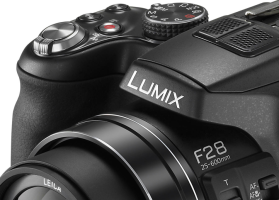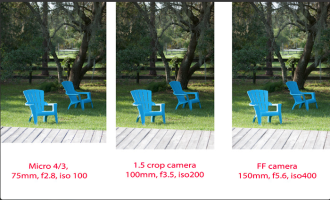The fact is these arguments have been going around and around for years on this forum. People bend themselves into pretzels to "prove" convoluted, esoteric "points" (See the previous post by
@AlanF).
"Equivalence" is too often synonymous with fuzzy thinking that allows people to confirm their own biases.
Your use of words like convoluted, fuzzy and silly merely confirms that you don’t comprehend the concepts being discussed.
Sure, people who do not understand a concept can misuse it to support their biases. That doesn’t negate the concept itself, for those who
do understand it.
What is objectively true is that an exposure of f5.6 at 1/250 sec at ISO 400 is not going to change no matter the focal length of the lens or the size of the recording medium.
True. Was someone suggesting that is not the case? If so, I missed it. But the fact that the exposure settings don’t change doesn’t mean the resulting images will be identical if focal length or sensor size are changed.
Now, if you want to argue that the grain in a 110 film image is going to be greater than the grain using a 4x5 view camera when both have an ISO of 400, well, that's a different matter. Or, if you want to argue that depth of field changes when you change position to get the same view with a smaller sensor that you would get with a larger sensor, that's true as well.
Yes, and of course we also can stipulate other facts that no one is arguing, like force equals mass times acceleration and the existence of electromagnetic radiation.
But statements like "a 500mm f/7.1 lets in as much light as a 400mm f/5.6" are plain silly. Okay, maybe he figures that since both lenses have the same diameter at the front end, they are "letting in" an equal amount of light. But that has zero use in the real world.
That statement is a fact (given a willingness to accept an approximation). 500mm / 7.1 = 70.4mm, 400mm / 5.6 = 71.4mm. You think it’s ‘plain silly’ because you fail to understand it’s significance.
What matters is the amount of light that will actually hit the sensor and an f7.1 lens is going to deliver less light to the sensor than an f5.6 lens, regardless of the focal length of the lens or the size of the sensor.
The point to which
@AlanF was replying was a claim that, “In the end the 100-400 does let in more light, comparing it to the 100-500 is misleading,” and that, “…500 f/7.1 is ridiculously slow and useless for [his] photography.”
The fact is 100-500 at 500mm f/7.1 is letting in about the same amount of light as the 100-400 at 400mm f/5.6. Yes, 500mm f/7.1 delivers less light to the sensor than 400mm f/5.6 (because of the longer focal length, as
@SteveC points out, that’s why we use the f/number ratio). So to match shutter speeds you raise the ISO slightly. Alan’s point was that if you crop the 400mm image to the FoV of the 500mm lens, the noise in the resulting picture will be the same as the noise in the picture taken at 500mm f/7.1 when you compare them (that’s another example of equivalence, something you should really try to understand).


